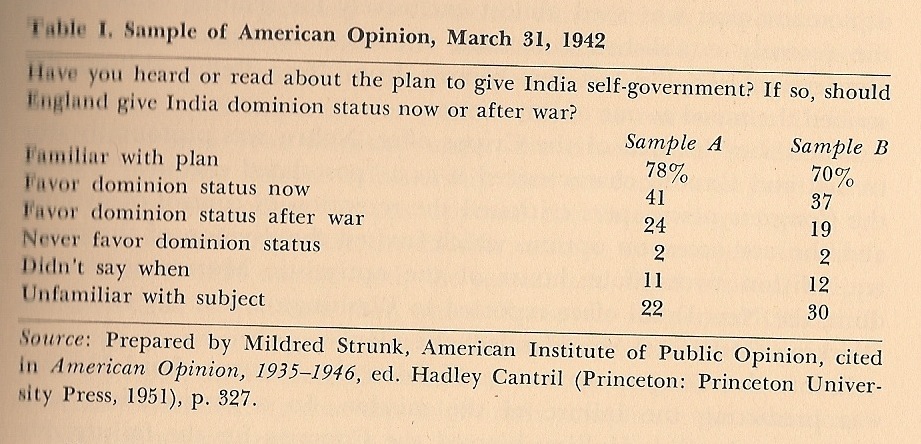This past week I’ve focused on reorganizing the blog to reflect a possible chronology and the key actors for my project.
Currently my timeline posts range in date from August 14, 1941 and the signing of the Atlantic Charter to August 15, 1947 and Indian independence. Some of these dates are purely contextual, while on other posts I have begun brief historigraphies by including key scholars interpretations of these events. I’m currently working on incorporating Gary Hess’ analyses and I’m also planning to add the work of the Indian scholars M.S. Venkataramani and B.K. Shrivastava to broaden the historiography. Right now I think 1941 will be a good starting point of my project, but I’m still unsure of when I want to end my analysis–currently I’m leaning towards the end of Mme. Pandit’s U.S. visit in 1945 which would also coincide with the end of WWII.
I’ve changed one my “biography” sub-categories from “diplomats” to “foreign actors” because I was looking for a way to incorporate British actors as well as Indians, like Gandhi, who never went to the United States.
I’m currently struggling at finding journalists and lobbyists with enough primary source evidence to make them feasible to profile. For example, I’m currently looking into the journalist Louis Fischer, who gets mentioned in most of my secondary reading, but doesn’t seem to have left a collection of papers. Because of accessibility, my “state” category is becoming a bit top heavy as many of these actors have published accounts.
My big news this week is that I’m currently in possession of the 1940-1954 issues of India Today. I’ve looked through the issues published during the war period and have become familiar with the monthly periodical’s basic format. India Today is essentially a newsletter, distributed by the India League of America, that seeks to inform Americans on major India issues by publishing pieces written by prominent Indians, Indian experts, or supports of India. In addition, it includes a “suggested reading” section, an “as we see it” editorial, as well as a documentation of the League’s recent activities. Many of my potential key actors are either discussed in India Today or write pieces for the publication. To be honest I’m not sure what to do with this wealth of evidence.






















